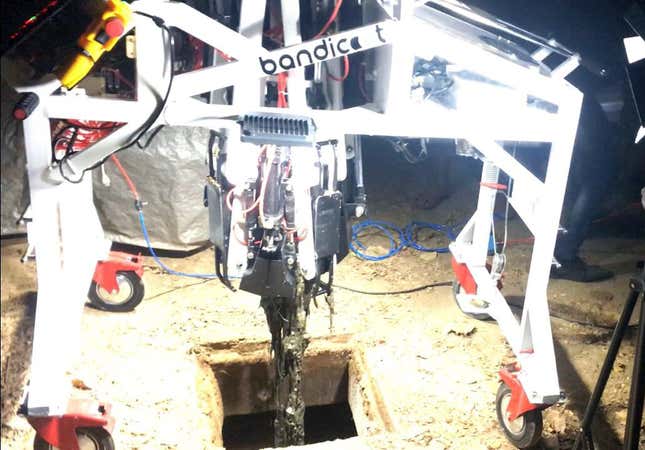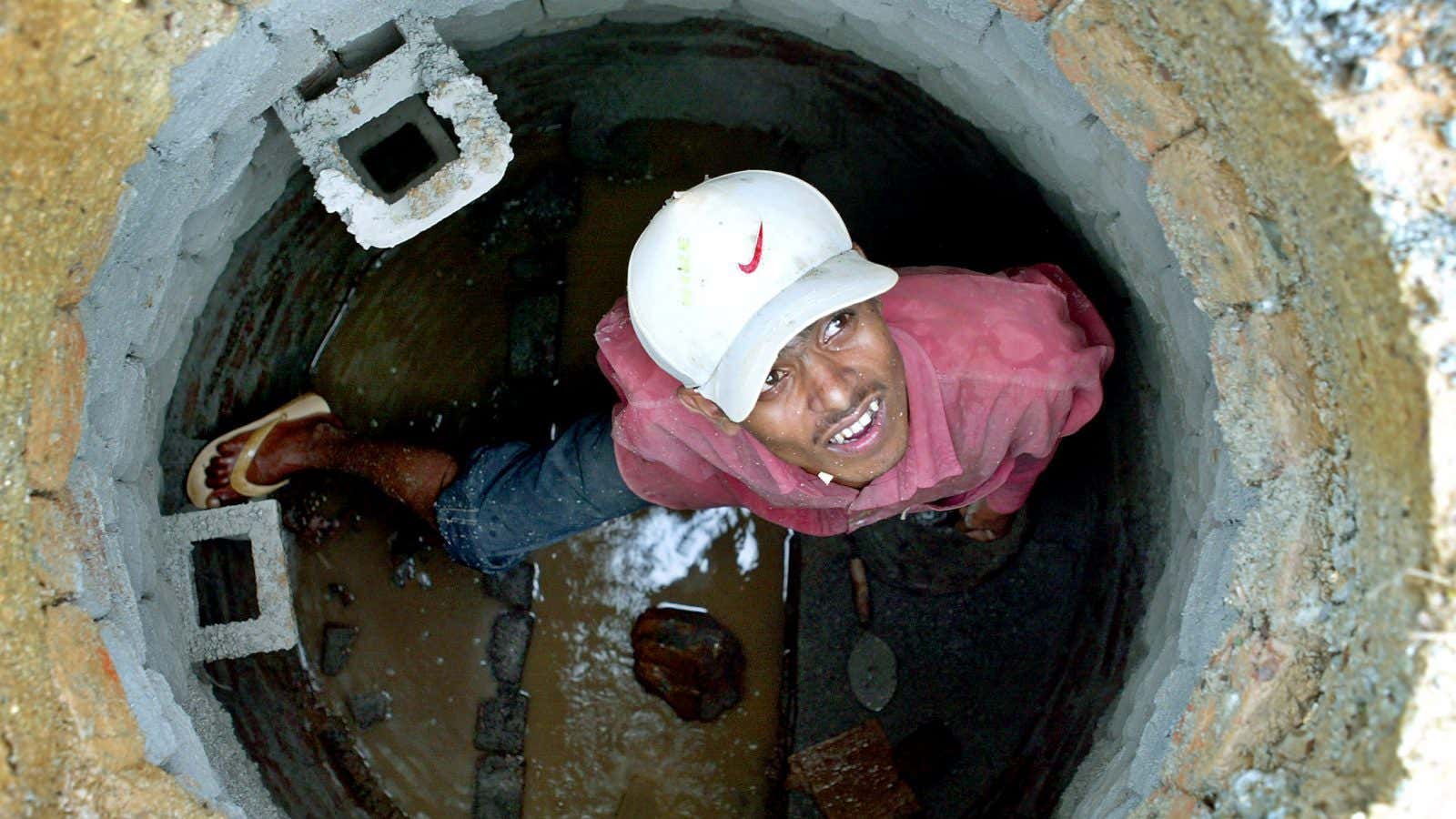An Indian startup has found a way to get rid of a centuries-old social problem in India that has only turned deadly in recent times, killing more people in a year than even terrorism does in Kashmir.
Genrobotics, a firm based in Thiruvananthapuram in the southern state of Kerala, has created a robot that cleans sewers—a degrading and dangerous task otherwise performed by thousands of manual scavengers across the country.
On Feb. 26, the startup deployed the first such robot, Bandicoot, in Thiruvananthapuram, in partnership with the Kerala state government. The spider-like machine, with an arm that drops into the manhole, unclogs it, and pulls out the sludge. Bandicoot does in 45 minutes what three workers take two hours to do, one of Genrobotics’ founders said.
The company is now in talks with the Indian government’s Swachh Bharat Mission (Clean India Mission) to take the four-legged Bandicoot countrywide, said Arun George, a co-founder of the firm.
The problem
The primary idea behind Bandicoot was to relieve the manual scavengers who, often without any protective gear, risk their lives every day trying to unclog drains. This is despite a nationwide ban on the practice.
Over the last three years, there have been over 300 manhole deaths in India. In January 2018 alone, seven such workers died in Mumbai and Bengaluru. Kerala witnessed a tragedy in 2015 when an autorickshaw driver, along with the two municipal workers he was trying to save, choked to death inside a drain in Kozhikode town.
The demand to do something about the practice has, thus, been raised often.
And that is where Genrobotics, founded in 2016 by college classmates MK Vimal Govind, Arun George, Rashid K, and Nikhil NP, stepped in.
“There are machines and tools to clean (sewers) but…all existing tools can be used only by workers entering the manhole. Our aim is to use to robots, to stop manhole deaths and accidents,” George told Quartz.
The team
It was in 2015, as students of MES College of Engineering, Kuttippuram, that the Genrobotics founders first set up a robotics group called Team Genrobotics under their institution’s entrepreneurship development cell.
The nine-member team built several robots and exoskeletons (wearable machines used to strengthen limb movements), including one which is now being optimised for large-scale use by Genrobotics’s research partners at the National Taipei University, Taiwan.
However, Team Genrobotics dispersed following graduation as its members took up other jobs. Then, in July 2017, Govind was approached by the Kerala government to find a robotic solution for manual scavenging.
The team soon regrouped for the task and incorporated the startup in 2016, raising around Rs10 lakh (around $1,500) from the Kerala Startup Mission, a state-run incubation and entrepreneurship development outfit.
Genrobotics then began work on Bandicoot in collaboration with Kerala Startup Mission and the state’s water supply and waste-water disposal department. The robot was officially launched on Feb. 26.
Bandicoot

The semi-automatic robot has an attachment that can open the manhole lids using a magnet instead of having workers lift the heavy lids. It also has a camera that helps monitor the manhole on the operating screen—an iPad-like touchscreen control system that makes it easy to control for even those who aren’t tech-savvy.
“We didn’t want (municipal workers) to be unemployed, so we made the user interface of the robots so simple that they can operate it,” George said. The startup is working with non-governmental organisations (NGOs) to train the workers in handling Bandicoot.
The team is now preparing to build 10 more pieces for the Kerala government over the next three months. The first Bandicoot was manufactured entirely in Kerala and cost around Rs10 lakh, but the price is expected to fall, George said.
While India is capable of manufacturing and using such robots, going large scale will require a lot of research focusing specifically on the use of robots for sewers, experts say.
“It’s a significant engineering challenge but not an impossible task,” Balaraman Ravindran, head of the Robert Bosch Centre for Data Science and Artificial Intelligence at the Indian Institute of Technology Madras, said. He explained that building such a robot involves a lot more than just getting the mechanical aspects right. “For example, in the manhole, you will not have enough light…there is a computer vision challenge, there is a control challenge, there is a materials challenge. (For instance,) what is the material that will not get corroded?” he explained.
